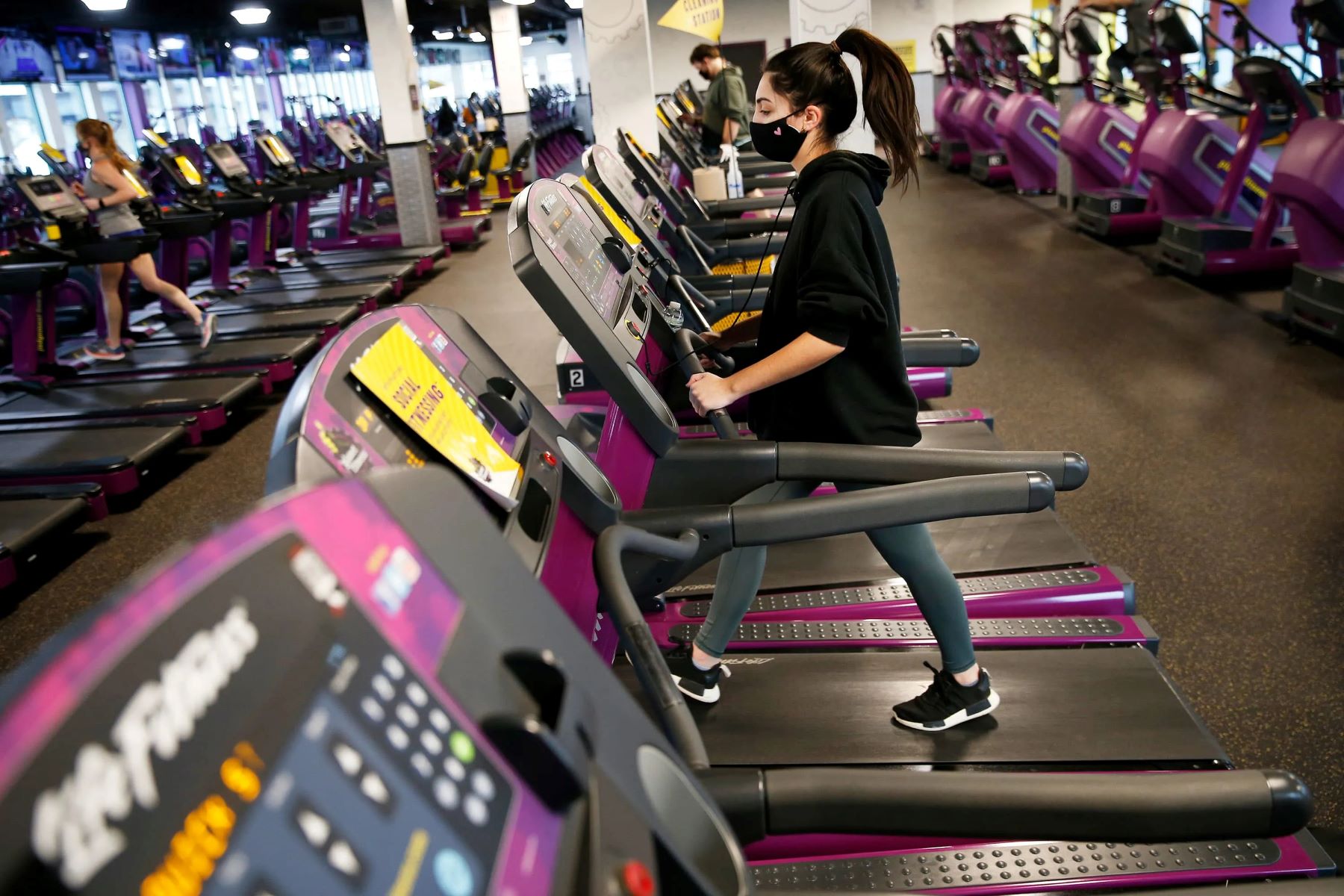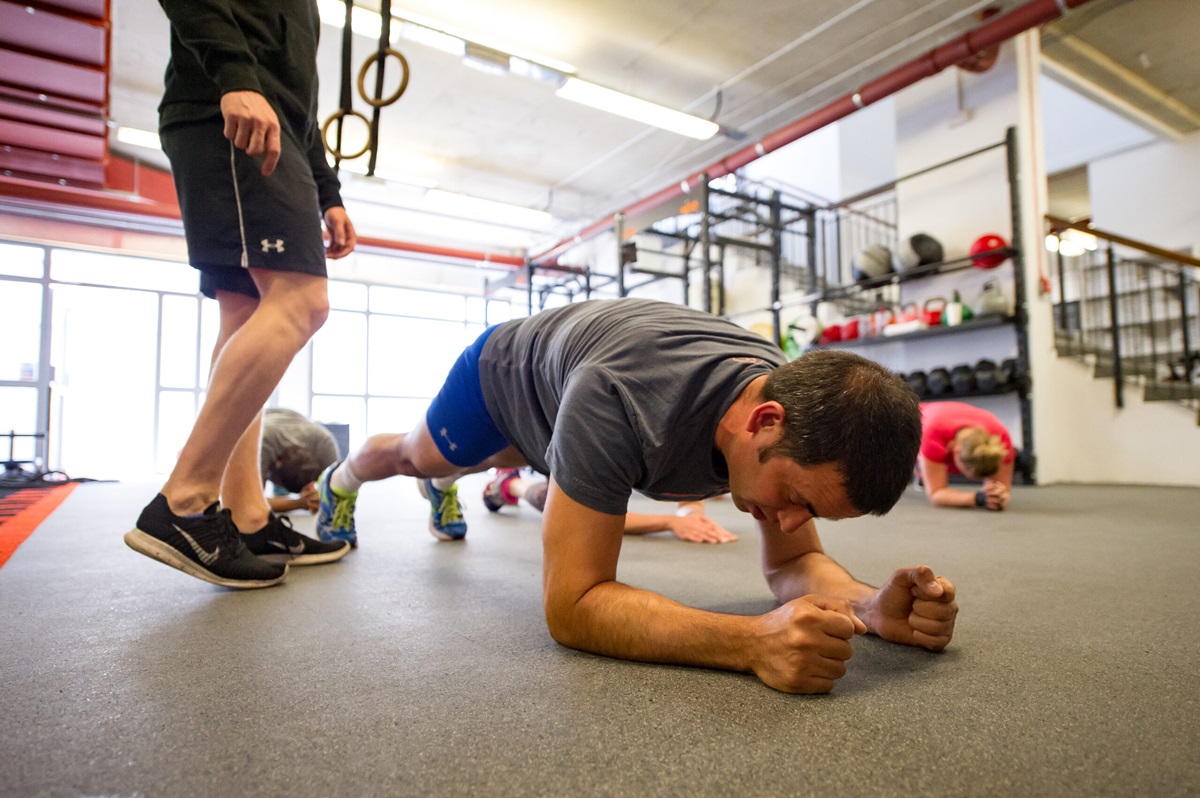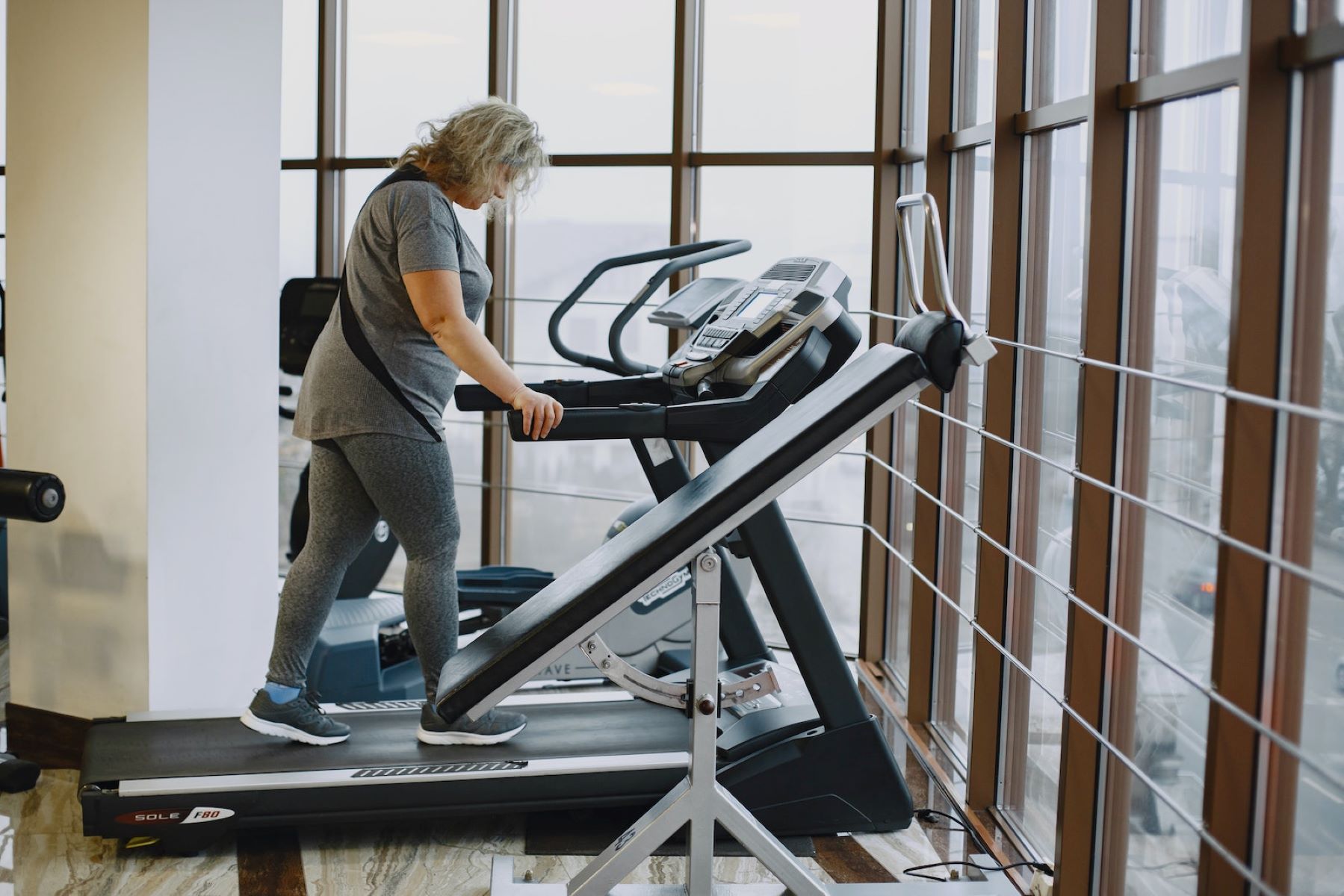Home>Misc>Featured>How Many Calories Can You Burn Jogging In Place


Featured
How Many Calories Can You Burn Jogging In Place
Modified: January 22, 2024
Find out how many calories you can burn jogging in place with this featured guide. Start on your fitness journey today and shed those pounds.
Introduction:
Jogging in place, also known as stationary jogging, is a convenient and effective way to burn calories and stay fit, especially when outdoor or gym space is limited. It allows you to engage in a cardio workout right at home or in the office, without the need for any special equipment or a large amount of space. Whether you’re trying to shed a few pounds, maintain a healthy weight, or simply improve your cardiovascular health, jogging in place can be a valuable addition to your fitness routine.
This article will explore the benefits of jogging in place, the factors that affect calorie burn, how to calculate calories burned, average calorie burn rates, and tips to maximize calorie burn during this exercise. Whether you’re a beginner looking to start jogging in place or a fitness enthusiast seeking to optimize your calorie burn, this article will provide you with the insights you need to achieve your goals.
So, lace up your shoes, find a comfortable spot, and let’s dive into the world of jogging in place and the incredible calorie-burning potential it offers.
Benefits of Jogging in Place:
Jogging in place offers numerous benefits for both your physical and mental well-being. Here are some of the key advantages:
- Cardiovascular Health: Jogging in place is an effective aerobic exercise that helps improve cardiovascular health. It elevates your heart rate, strengthening your heart and increasing blood circulation throughout your body. Regular cardio exercise like jogging in place can lower the risk of heart disease, high blood pressure, and stroke.
- Weight Loss and Management: Jogging in place is a calorie-burning activity that can aid in weight loss and weight management. By creating an energy deficit, jogging in place helps to burn stored fat, resulting in weight loss. It also helps maintain a healthy weight by keeping your metabolism active and promoting muscle tone.
- Convenience and Accessibility: One of the biggest advantages of jogging in place is its convenience and accessibility. You can perform this exercise at any time and in any location, whether it’s at home, in the office, or while traveling. You don’t need any special equipment or a large space, making it an ideal option for those with limited resources or mobility restrictions.
- Strengthens Lower Body Muscles: Jogging in place targets and strengthens the muscles in your lower body, including your calves, quadriceps, hamstrings, and glutes. The repetitive motion of jogging helps to tone and sculpt these muscles, improving your overall leg strength and endurance.
- Mental Well-being: Jogging in place not only benefits your physical health but also has positive effects on your mental well-being. It releases endorphins, also known as “feel-good” hormones, which can boost your mood, reduce stress, and improve sleep quality. Incorporating regular jogging in place into your routine can contribute to a healthier mind and a better overall sense of well-being.
Incorporating jogging in place into your fitness regimen can yield remarkable benefits for your body and mind. Whether you’re aiming to improve your cardiovascular health, manage your weight, or simply enhance your overall well-being, jogging in place is a versatile and accessible exercise that can help you achieve your goals.
Factors Affecting Calorie Burn:
Several factors can influence the number of calories burned while jogging in place. Understanding these factors can help you optimize your calorie burn and tailor your workouts to meet your fitness goals. Here are some key factors to consider:
- Intensity: The intensity of your jogging in place session plays a significant role in determining the number of calories you burn. Higher intensity workouts, where you jog vigorously and exert more effort, will result in a higher calorie burn compared to low-intensity sessions.
- Body Weight: Your body weight affects calorie burn during exercise. Heavier individuals tend to burn more calories while performing the same activity compared to lighter individuals. This is because more energy is required to move a larger body mass.
- Duration of Exercise: The duration of your jogging in place session also influences calorie burn. Generally, the longer you engage in the activity, the more calories you will burn. It is essential to find a balance between intensity and duration to avoid overexertion and maintain a safe and effective workout.
- Age and Gender: Age and gender can impact calorie burn during exercise. Generally, younger individuals tend to have a higher metabolic rate and burn more calories compared to older individuals. Additionally, men usually have a higher muscle mass and basal metabolic rate, resulting in a higher calorie burn during exercise compared to women.
- Efficiency of Movement: The efficiency with which you perform your jogging in place movements can affect calorie burn. Engaging your core, maintaining proper form, and using your arms can help maximize calorie burn by involving more muscle groups in the exercise.
- Environmental Factors: Environmental factors such as temperature and humidity can impact calorie burn. Exercising in hot and humid conditions can cause your body to work harder, resulting in increased calorie burn.
It’s important to keep in mind that these factors can vary from person to person. What’s most crucial is to find a level of intensity and duration that is suitable for your fitness level and gradually increase it over time to challenge yourself and continue making progress. Monitoring your heart rate during exercise can also provide valuable insights into your calorie burn and overall workout effectiveness.
How to Calculate Calories Burned while Jogging in Place:
Calculating the number of calories burned during your jogging in place session can provide valuable insights into your workout intensity and help you track your progress. While there are various ways to estimate calorie burn, one commonly used method is to utilize metabolic equations. Here’s a step-by-step guide on how to calculate calories burned while jogging in place:
- Step 1: Determine your MET Value: MET, or Metabolic Equivalent of Task, is a unit that represents the amount of energy expended during physical activities. The MET value for jogging in place is typically around 8.0. MET values can vary depending on the intensity and duration of your workout, so adjust accordingly if necessary.
- Step 2: Calculate your Resting Metabolic Rate (RMR): Your RMR is the number of calories your body needs at rest to function properly. It can be estimated using various formulas and is influenced by factors such as age, weight, height, and gender. Once you have your RMR value, you can proceed to the next step.
- Step 3: Calculate the Total Energy Expenditure: To calculate the total energy expenditure, multiply your MET value by your RMR. For example, if your RMR is 1500 calories and your MET value for jogging in place is 8.0, your total energy expenditure would be 1500 x 8.0 = 12,000 calories.
- Step 4: Determine the Duration of your Jogging in Place Session: Measure the duration of your workout in minutes. For example, if you jog in place for 30 minutes, your total exercise duration would be 30 minutes.
- Step 5: Calculate Calories Burned: Finally, to calculate the calories burned during your jogging in place session, divide the total energy expenditure by 60 (to convert from minutes to hours) and then multiply it by the duration of your workout in hours. Using the previous example, if your total energy expenditure is 12,000 calories and your workout duration is 30 minutes (0.5 hours), your calories burned would be 12,000/60 x 0.5 = 200 calories.
It’s important to note that this calculation provides an estimate and may not be 100% accurate for everyone. Individual variations in metabolism, fitness level, and other factors can influence calorie burn. However, this method serves as a useful guideline to track your progress and make comparisons over time.
Average Calorie Burn while Jogging in Place:
The average number of calories burned while jogging in place can vary based on several factors, including your weight, intensity of exercise, and duration of the workout. On average, a person weighing around 155 pounds (70 kilograms) can expect to burn approximately 280-320 calories in a 30-minute session of jogging in place at a moderate intensity.
However, it’s essential to note that these numbers are estimates and can vary from person to person. Factors such as individual metabolism, body composition, and fitness level can influence the actual calorie burn. Additionally, increasing the intensity or duration of your workout can lead to a higher calorie burn.
If you’re looking to burn more calories during your jogging in place sessions, there are a few strategies you can implement. Firstly, you can increase the intensity of the exercise by incorporating interval training. Alternate between periods of high-intensity jogging and lower-intensity recovery periods to challenge your cardiovascular system and boost calorie burn.
Additionally, adding movements or variations to your jogging in place routine can help engage more muscle groups and increase calorie expenditure. For example, you can incorporate high knees, jumping jacks, or punches to make the workout more challenging and dynamic.
Another way to optimize calorie burn is by gradually increasing the duration of your jogging in place sessions. As you build endurance, you can extend your workout time, allowing for more calorie expenditure. However, be mindful of any signs of overexertion and listen to your body to avoid injuries.
Remember, the key to effective calorie burn is finding the right balance between intensity and duration that suits your fitness level and allows for consistent progress. It’s important to consult with a healthcare professional or fitness expert before making any significant changes to your exercise routine, especially if you have any underlying health conditions.
By incorporating these strategies and maintaining a consistent jogging in place routine, you can maximize your calorie burn and achieve your fitness goals more efficiently. However, keep in mind that regular exercise, coupled with a balanced diet, is essential for overall health and weight management.
Tips to Maximize Calorie Burn while Jogging in Place:
Jogging in place is a versatile exercise that can be customized to fit your fitness level and goals. To maximize calorie burn during your jogging in place sessions, consider incorporating the following tips into your routine:
- Increase Intensity: To burn more calories, increase the intensity of your jogging in place. You can do this by jogging faster, lifting your knees higher, or adding in explosive movements like jump squats or high knee jumps. Intervals of high intensity followed by periods of rest can also significantly boost calorie burn.
- Incorporate Strength Training: Combine jogging in place with strength exercises to engage more muscles and increase calorie burn. For example, you can intersperse sets of bodyweight exercises like push-ups, squats, or lunges during your jogging session. This combination of cardio and strength training can lead to a higher overall calorie expenditure.
- Add Variations: To challenge your muscles and increase calorie burn, incorporate variations into your jogging in place routine. You can try jogging with high knees, side shuffles, or butt kicks. These movements engage different muscle groups, making your workout more effective and exciting.
- Use Arm Movements: Engage your upper body by adding arm movements while jogging in place. Swing your arms back and forth or raise them above your head as you jog. This helps to activate more muscles and increase calorie burn.
- Utilize Technology: Consider using fitness trackers or smartwatches to track your calorie burn during jogging in place. These devices provide real-time data, including heart rate and calories burned, helping you monitor your progress and make adjustments to your workout intensity if needed.
- Maintain Proper Form: Pay attention to your posture and form while jogging in place. Stand tall, engage your core, and keep your shoulders relaxed. This allows for the efficient movement of your body, enabling you to burn more calories and reduce the risk of injury.
- Stay Consistent: Consistency is key to maximizing calorie burn. Aim for regular jogging in place sessions, gradually increasing the duration and intensity over time. By sticking to a routine, you’ll build endurance and burn more calories in the long run.
Remember to listen to your body and adjust the intensity and duration of your jogging in place sessions based on your fitness level and any underlying health conditions. It’s always a good idea to consult with a healthcare professional or fitness expert before starting any new exercise program, especially if you have any concerns or medical considerations.
Conclusion:
Jogging in place is a convenient and effective exercise option that can help you burn calories, improve cardiovascular health, maintain a healthy weight, and boost your overall well-being. With its accessibility and versatility, jogging in place offers a range of benefits and can be tailored to suit individual fitness levels and goals.
By understanding the factors that affect calorie burn, calculating your calories burned during each session, and incorporating tips to maximize calorie expenditure, you can optimize the effectiveness of your jogging in place workouts. Increasing intensity, adding variations, incorporating strength training, and staying consistent are strategies that can help you burn more calories and achieve your fitness objectives.
Remember to work within your abilities, gradually increase intensity and duration, and maintain proper form to avoid injury and ensure a safe workout. It’s always a good idea to consult with a healthcare professional or certified fitness expert before starting any new exercise program, especially if you have specific health concerns or limitations.
So, whether you’re looking to shed a few pounds, improve cardiovascular fitness, or simply add more variety to your exercise routine, jogging in place can be a valuable addition. Lace up your shoes, find a comfortable spot, and start reaping the benefits of this convenient, calorie-burning workout today.
Get ready to elevate your heart rate, burn calories, and experience the joy of jogging in place, right in the comfort of your own space!









